

/en/excel2013/getting-started-with-excel/content/
Excel files are called workbooks. Whenever you start a new project in Excel, you'll need to create a new workbook. There are several ways to start working with a workbook in Excel 2013. You can choose to create a new workbook—either with a blank workbook or a predesigned template—or open an existing workbook.
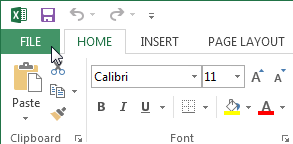 Clicking the File tab
Clicking the File tab Creating a new workbook
Creating a new workbookIn addition to creating new workbooks, you'll often need to open a workbook that was previously saved. To learn more about saving workbooks, visit our lesson on Saving and Sharing Workbooks.
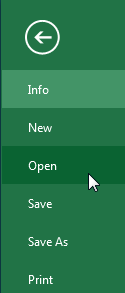 Opening a file
Opening a file 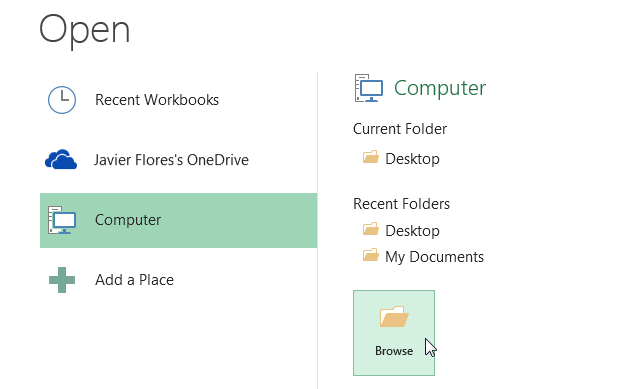 Opening a workbook
Opening a workbook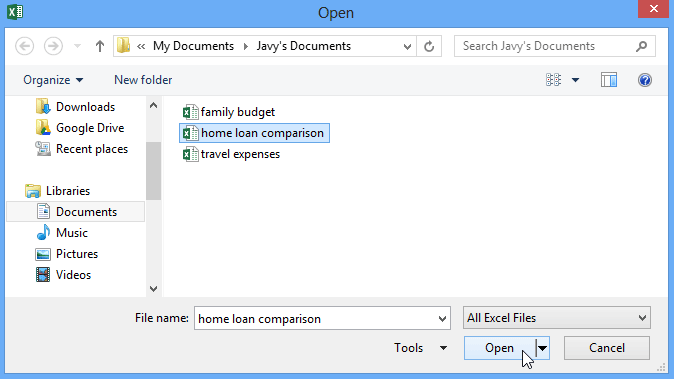 Opening a workbook
Opening a workbook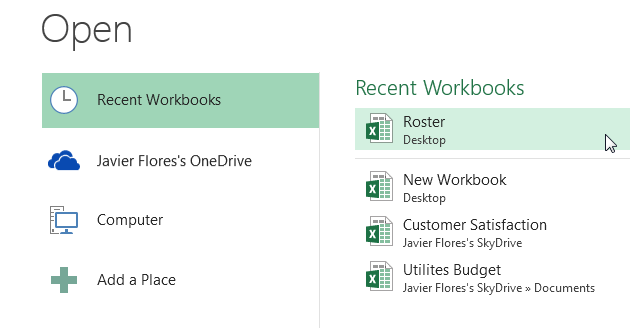 Recently Presentations
Recently PresentationsIf you frequently work with the same workbook, you can pin it to Backstage view for faster access.
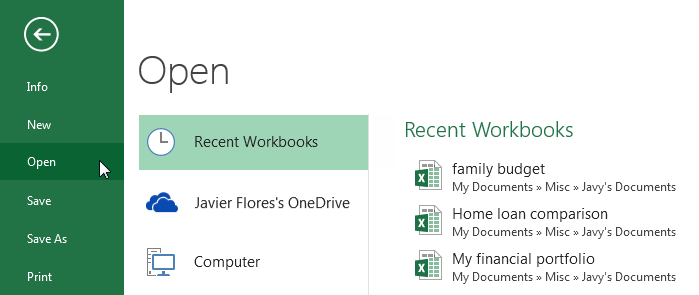 Viewing recently edited workbooks
Viewing recently edited workbooks will appear next to the workbook. Click the pushpin icon.
will appear next to the workbook. Click the pushpin icon.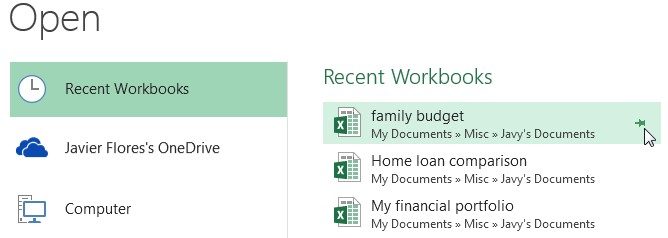 Pinning a workbook
Pinning a workbook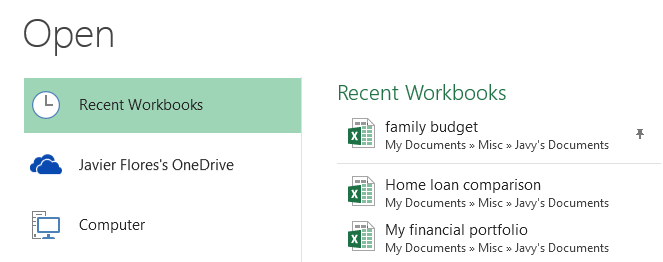
You can also pin folders to Backstage view for faster access. From Backstage view, click Open, then locate the folder you want to pin and click the pushpin icon.
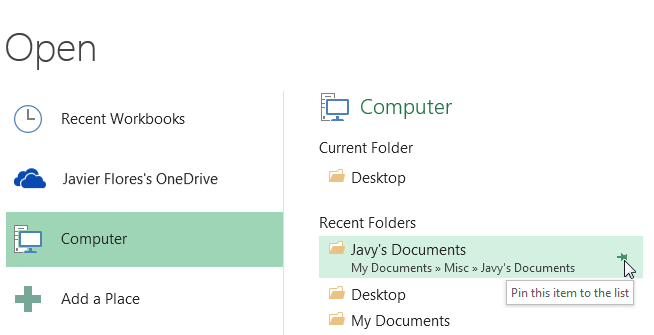 Pinning a folder to Backstage view
Pinning a folder to Backstage view
A template is a predesigned spreadsheet you can use to create a new workbook quickly. Templates often include custom formatting and predefined formulas, so they can save you a lot of time and effort when starting a new project.
 Navigating to Backstage view
Navigating to Backstage view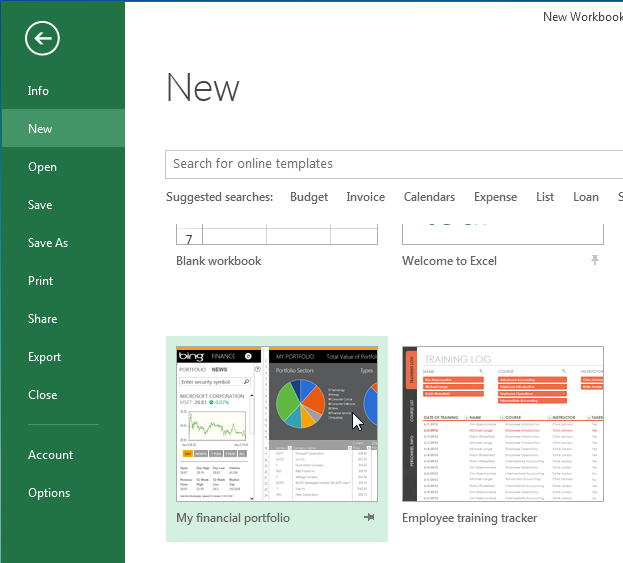 Selecting a template
Selecting a template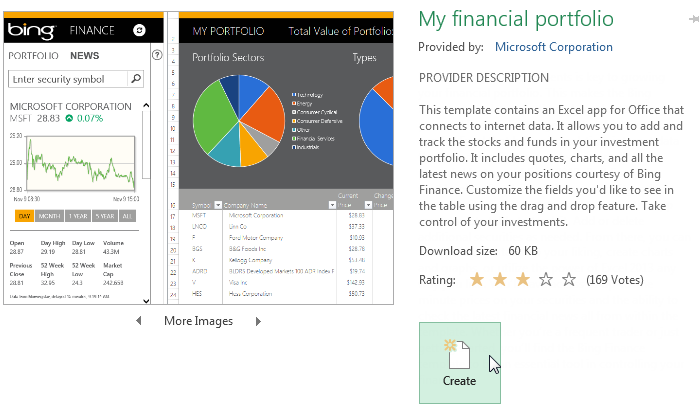 Creating a new workbook with a template
Creating a new workbook with a templateYou can also browse templates by category or use the search bar to find something more specific.
 Searching for a template
Searching for a templateIt's important to note that not all templates are created by Microsoft. Many are created by third-party providers and even individual users, so some templates may work better than others.
Sometimes you may need to work with workbooks that were created in earlier versions of Microsoft Excel, such as Excel 2003 or Excel 2000. When you open these types of workbooks, they will appear in Compatibility mode.
Compatibility mode disables certain features, so you'll only be able to access commands found in the program that was used to create the workbook. For example, if you open a workbook created in Excel 2003, you can only use tabs and commands found in Excel 2003.
In the image below, you can see that the workbook is in Compatibility mode. This will disable some Excel 2013 features, such as sparklines and slicers.
 Disabled commands in Compatibility mode
Disabled commands in Compatibility modeIn order to exit Compatibility mode, you'll need to convert the workbook to the current version type. However, if you're collaborating with others who only have access to an earlier version of Excel, it's best to leave the workbook in Compatibility mode so the format will not change.
If you want access to all of the Excel 2013 features, you can convert the workbook to the 2013 file format.
Note that converting a file may cause some changes to the original layout of the workbook.
 Clicking the File tab
Clicking the File tab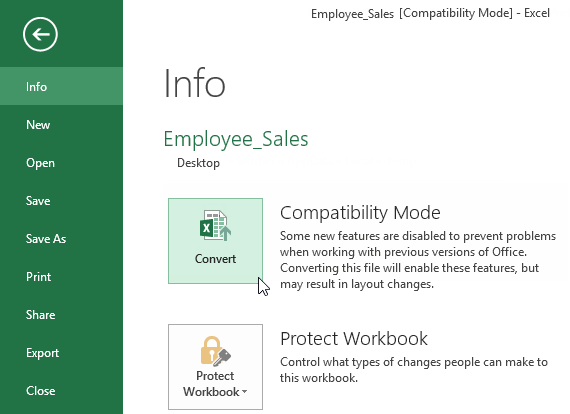 Converting the workbook to the newest file type
Converting the workbook to the newest file type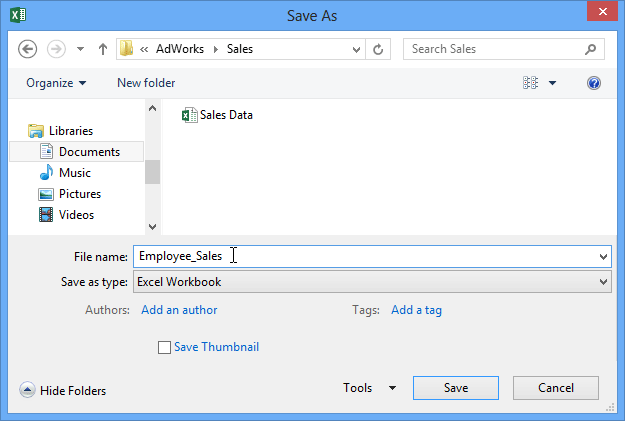 Saving a new version of the workbook
Saving a new version of the workbook
/en/excel2013/saving-and-sharing-workbooks/content/